Crystalshard's Illustrated Anglo-American Reference Guide
I've seen a lot of Americans using Americanisms in fic about British shows. Most are very receptive to any Britpicking, but I thought that I'd write up a quick reference guide to save people time. So guys, this is my translation manual. Here are the correct names, and what your words actually mean over here . . .
WARNING: Not children-friendly or work-safe due to pictures of semi-naked people in underwear.
For any quick references, check out this page: British/American vocabularies. It's very good, listing vocabulary differences between American English and Queen's English.
Cab/Taxi
In the US, the word is cab. In the UK, it's called a taxi.
The word cab probably had its origin as a shortened version of the word cabriolet, which in its original meaning was a little horse-drawn two- or four-wheeled carriage that served the same purpose as modern taxis do now. They were still operating in London and in other areas at the beginning of the 20th century, but faded out as modern cars became more numerous.
The word taxi has a three thousand year history. Taxai was originally a Greek word. It got stolen by the Romans and became taxare, a word meaning 'to reckon'. It was left alone until 1890, when a man in Germany invented a device to reckon the cost of a journey. He called this a taxameter. When the word migrated to France, it became a taximetre. On hopping the Channel to England, the word became multi-purpose, with both machine and vehicle being called a taxy. This changed over time to taxi. It seems that the word sank on the way across the Atlantic, however!
This is a taxi:

This is a cab:
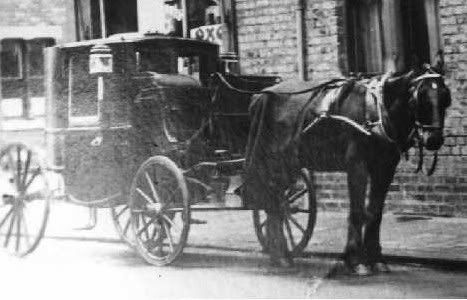
Suspenders/Braces
In the US, they're suspenders. In the UK, they're braces.
This one creates a lot of confusion, as both words have multiple meanings. Braces, in the UK, can be both elastic straps to hold up trousers and wires that remodel your teeth. Suspenders, however, are elastic straps used to hold up stockings. Now, while I'm not going to speculate about what characters like Captain Jack Harkness of Torchwood wear off-duty, I can guarantee that what we see him wearing are braces.
And just to be confusing, a brace is a hunting term, used for game. It means two. So a brace of rabbits would be two dead rabbits waiting for the stew pot.
These are braces:
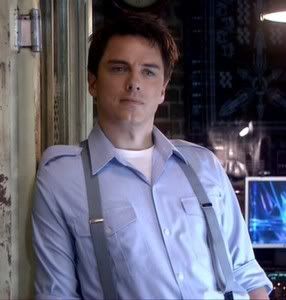
This is a set of braces:

This is a brace of rabbits (or in fact, two brace):
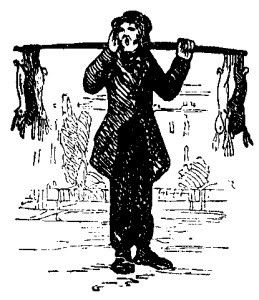
This is a set of suspenders:

Pants/Trousers
In the US, it's pants, while in the UK, the only word is trousers.
This is another confusing one. Pants in the UK refers to undergarments, although they're more commonly referred to as underpants. In the UK, if a man is stripped down to his pants, he's a good bit more undressed than if he would be if he was in the US.
These are trousers:
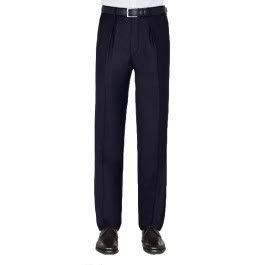
These are pants:

Vest/Waistcoat
In the US, it's vest. In the UK, it's waistcoat.
Over in the UK, a vest is something you wear under your clothes, or something you wear for sports. It can also be used to describe protective gear used by the police and the armed forces. If it's not bulletproof, then it's a sleeveless jacket.
A waistcoat, however, is worn with a smart suit, over the shirt but under the jacket.
This is a vest:

This is a police vest:
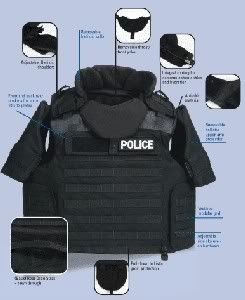
This is a waistcoat:

And so is this:
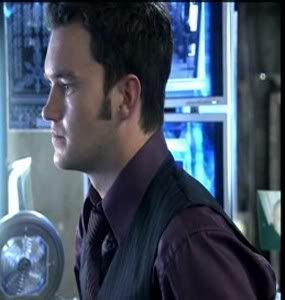
Shirt/T-shirt
In the US, it can be shirt. In the UK, it's t-shirt.
I've heard the word shirt in the US used for both shirts with collars and for casual t-shirts. In the UK, however, shirt is only used for a garment with a collar and buttons down the front. It's usually worn only by men, although the lines are beginning to blur.
A t-shirt refers to a casual top with short sleeves. T-shirts do not unbutton all the way down, nor do they have collars.
This is a shirt:

This is a t-shirt:
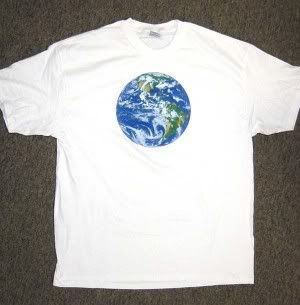
Ass/Arse
In the US, it's an ass. In the UK, it's an arse.
Another of those 'lost in translation' moments, although more and more people understand both meanings these days. An ass,in the US, is someone's rear end. In the UK, ass is another word for donkey.
This is an ass:
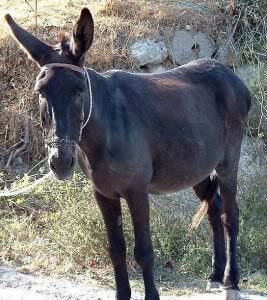
I'm sure you all know what someone's arse looks like.
Soccer/Football
Here's the game that gets confusing. In the US, it's soccer, while in the UK, it's football.
This one gets long, and very complicated. Football (UK) is played with a round ball, and is one of the main sports over here. However, the school teams and football captains are not as lionised as their American football counterparts. There are no such things as cheerleaders.
Football (US) is akin to English rugby, only with extra padding and tea breaks.
This is football:

This is American football:
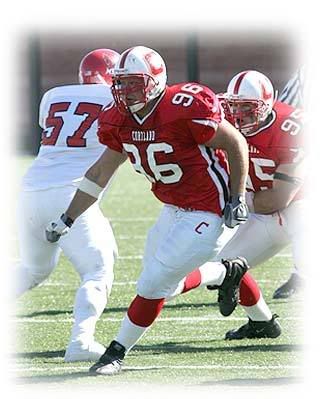
This is rugby:
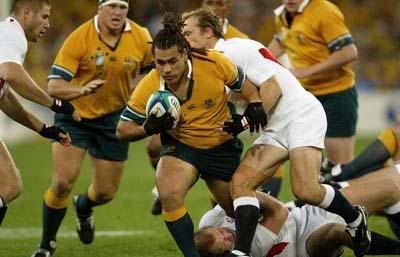
The school system
This is something that a lot of people get confused about. The UK gets quite a few American high-school shows, but I don't know how many the US get that show the UK schooling system. So here's a quick guide on the UK version.
(I'm leaving things such as grammar schools and the Buckinghamshire system out of this, as it would make things needlessly complicated.)
School in the UK runs on a schedule of three terms - autumn, spring and summer. These are broken up by half-term holidays of one week each that come halfway through each term.
The school year starts in September, and continues until the Christmas holidays. This is known as 'autumn term'. After Christmas and the New Year (usually a holiday period of two weeks) starts spring term, which continues until Easter. Easter holidays are either two weeks or three, depending on how generous the school is. Then there is summer term, which generally ends around the beginning/middle of July. After summer term comes the summer holidays, which is a period of five to eight weeks, depending on the school.
Pre-school /nursery school /playgroup:
(Ages 2-4)
Exactly what it says on the tin. Young children can attend pre-school for a few hours a day, usually between two and as half to four hours. An increasing number of places now offer full daycare.
Primary school:
(Ages 4-11)
Children that join at four should turn five before the beginning of September. For example, a child born in January would start primary school at age four, but turn five before the end of the school year. Instruction levels: Key Stage 1 from ages 4-7, then Key Stage 2 from ages 7-11.
Secondary school:
(Ages 11-16)
Children now learn at Key Stage 3. In the final two years, the teenagers study for their GCSEs (General Certificate of Secondary Education), formerly known as O levels (or ordinary levels) until 1986. These final two years are Key Stage 4. These qualifications consist of both coursework and exams. It is rare to take fewer GCSEs than 9, or more than 11. Possible grades achieved range from A* to A to G, with A* (or A star) being the highest and G being the lowest. If the pupil (not student at this level) fails completely, then the GCSE is marked as U, or ungraded. This means that they have failed the GCSE. Most colleges and jobs want grades C and above.
College:
(Ages 16-18)
At college, teenagers between 16 and 18 study for two years to take their A levels (advanced levels). It is most common to take 3 A levels, although some take only two and a rare few can do as many as five. Again, a combination of coursework and exams are used to determine the final grade. A level grades only go between A to E, with the usual U in case of failure. These are the stepping stone into:
University:
(Ages 18+)
University, or Uni, is where people go to do their degrees. They usually pick one subject and study it for three to four years, depending on the type of degree they want. In England, completing a three-year course gives you a Batchelor's degree. This is usually expressed as BA (Batchelor of Arts, e.g. a degree in History) or BSc (Batchelor of sciences, e.g. a Physics degree), or something similar. Four years gives you a Master's degree, follows the same naming convention (MA, MSc, etc.).
University in the UK is usually referred to as 'Uni'. It's never referred to as 'college', since that is used for a completely different phase of education.
For more in-depth information on the UK school system, please see hellenebright's comment below.
Anything else you want explained? Comment here!
WARNING: Not children-friendly or work-safe due to pictures of semi-naked people in underwear.
For any quick references, check out this page: British/American vocabularies. It's very good, listing vocabulary differences between American English and Queen's English.
Cab/Taxi
In the US, the word is cab. In the UK, it's called a taxi.
The word cab probably had its origin as a shortened version of the word cabriolet, which in its original meaning was a little horse-drawn two- or four-wheeled carriage that served the same purpose as modern taxis do now. They were still operating in London and in other areas at the beginning of the 20th century, but faded out as modern cars became more numerous.
The word taxi has a three thousand year history. Taxai was originally a Greek word. It got stolen by the Romans and became taxare, a word meaning 'to reckon'. It was left alone until 1890, when a man in Germany invented a device to reckon the cost of a journey. He called this a taxameter. When the word migrated to France, it became a taximetre. On hopping the Channel to England, the word became multi-purpose, with both machine and vehicle being called a taxy. This changed over time to taxi. It seems that the word sank on the way across the Atlantic, however!
This is a taxi:

This is a cab:

Suspenders/Braces
In the US, they're suspenders. In the UK, they're braces.
This one creates a lot of confusion, as both words have multiple meanings. Braces, in the UK, can be both elastic straps to hold up trousers and wires that remodel your teeth. Suspenders, however, are elastic straps used to hold up stockings. Now, while I'm not going to speculate about what characters like Captain Jack Harkness of Torchwood wear off-duty, I can guarantee that what we see him wearing are braces.
And just to be confusing, a brace is a hunting term, used for game. It means two. So a brace of rabbits would be two dead rabbits waiting for the stew pot.
These are braces:

This is a set of braces:

This is a brace of rabbits (or in fact, two brace):

This is a set of suspenders:

Pants/Trousers
In the US, it's pants, while in the UK, the only word is trousers.
This is another confusing one. Pants in the UK refers to undergarments, although they're more commonly referred to as underpants. In the UK, if a man is stripped down to his pants, he's a good bit more undressed than if he would be if he was in the US.
These are trousers:

These are pants:

Vest/Waistcoat
In the US, it's vest. In the UK, it's waistcoat.
Over in the UK, a vest is something you wear under your clothes, or something you wear for sports. It can also be used to describe protective gear used by the police and the armed forces. If it's not bulletproof, then it's a sleeveless jacket.
A waistcoat, however, is worn with a smart suit, over the shirt but under the jacket.
This is a vest:

This is a police vest:

This is a waistcoat:

And so is this:

Shirt/T-shirt
In the US, it can be shirt. In the UK, it's t-shirt.
I've heard the word shirt in the US used for both shirts with collars and for casual t-shirts. In the UK, however, shirt is only used for a garment with a collar and buttons down the front. It's usually worn only by men, although the lines are beginning to blur.
A t-shirt refers to a casual top with short sleeves. T-shirts do not unbutton all the way down, nor do they have collars.
This is a shirt:

This is a t-shirt:

Ass/Arse
In the US, it's an ass. In the UK, it's an arse.
Another of those 'lost in translation' moments, although more and more people understand both meanings these days. An ass,in the US, is someone's rear end. In the UK, ass is another word for donkey.
This is an ass:

I'm sure you all know what someone's arse looks like.
Soccer/Football
Here's the game that gets confusing. In the US, it's soccer, while in the UK, it's football.
This one gets long, and very complicated. Football (UK) is played with a round ball, and is one of the main sports over here. However, the school teams and football captains are not as lionised as their American football counterparts. There are no such things as cheerleaders.
Football (US) is akin to English rugby, only with extra padding and tea breaks.
This is football:

This is American football:

This is rugby:

The school system
This is something that a lot of people get confused about. The UK gets quite a few American high-school shows, but I don't know how many the US get that show the UK schooling system. So here's a quick guide on the UK version.
(I'm leaving things such as grammar schools and the Buckinghamshire system out of this, as it would make things needlessly complicated.)
School in the UK runs on a schedule of three terms - autumn, spring and summer. These are broken up by half-term holidays of one week each that come halfway through each term.
The school year starts in September, and continues until the Christmas holidays. This is known as 'autumn term'. After Christmas and the New Year (usually a holiday period of two weeks) starts spring term, which continues until Easter. Easter holidays are either two weeks or three, depending on how generous the school is. Then there is summer term, which generally ends around the beginning/middle of July. After summer term comes the summer holidays, which is a period of five to eight weeks, depending on the school.
Pre-school /nursery school /playgroup:
(Ages 2-4)
Exactly what it says on the tin. Young children can attend pre-school for a few hours a day, usually between two and as half to four hours. An increasing number of places now offer full daycare.
Primary school:
(Ages 4-11)
Children that join at four should turn five before the beginning of September. For example, a child born in January would start primary school at age four, but turn five before the end of the school year. Instruction levels: Key Stage 1 from ages 4-7, then Key Stage 2 from ages 7-11.
Secondary school:
(Ages 11-16)
Children now learn at Key Stage 3. In the final two years, the teenagers study for their GCSEs (General Certificate of Secondary Education), formerly known as O levels (or ordinary levels) until 1986. These final two years are Key Stage 4. These qualifications consist of both coursework and exams. It is rare to take fewer GCSEs than 9, or more than 11. Possible grades achieved range from A* to A to G, with A* (or A star) being the highest and G being the lowest. If the pupil (not student at this level) fails completely, then the GCSE is marked as U, or ungraded. This means that they have failed the GCSE. Most colleges and jobs want grades C and above.
College:
(Ages 16-18)
At college, teenagers between 16 and 18 study for two years to take their A levels (advanced levels). It is most common to take 3 A levels, although some take only two and a rare few can do as many as five. Again, a combination of coursework and exams are used to determine the final grade. A level grades only go between A to E, with the usual U in case of failure. These are the stepping stone into:
University:
(Ages 18+)
University, or Uni, is where people go to do their degrees. They usually pick one subject and study it for three to four years, depending on the type of degree they want. In England, completing a three-year course gives you a Batchelor's degree. This is usually expressed as BA (Batchelor of Arts, e.g. a degree in History) or BSc (Batchelor of sciences, e.g. a Physics degree), or something similar. Four years gives you a Master's degree, follows the same naming convention (MA, MSc, etc.).
University in the UK is usually referred to as 'Uni'. It's never referred to as 'college', since that is used for a completely different phase of education.
For more in-depth information on the UK school system, please see hellenebright's comment below.
Anything else you want explained? Comment here!